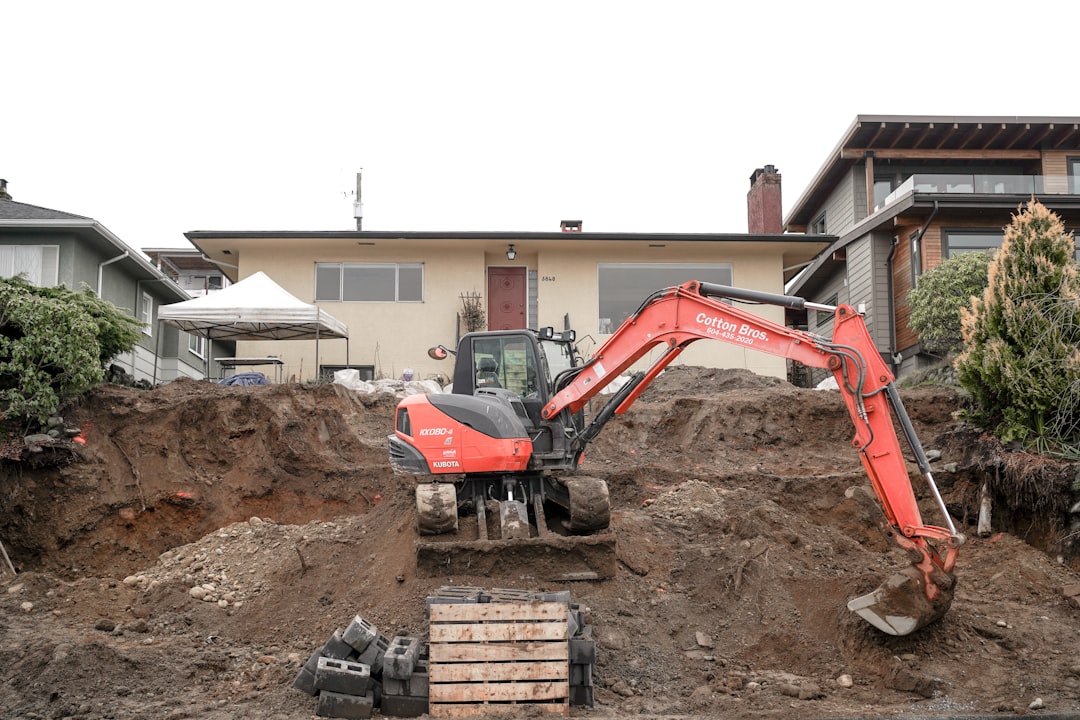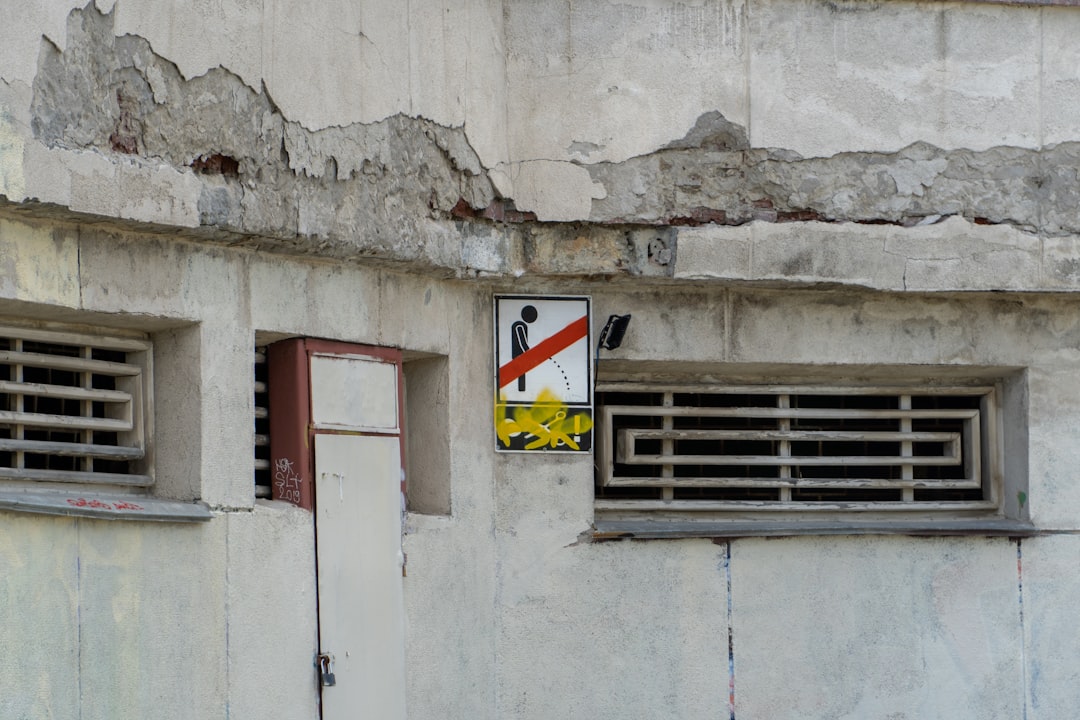

Engage prospects with a scan and streamline customer engagement with FREE QR code marketing tools by Sona – no strings attached!
Create a Free QR CodeFree consultation

No commitment

Engage prospects with a scan and streamline customer engagement with FREE QR code marketing tools by Sona – no strings attached!
Create a Free QR CodeFree consultation

No commitment
Demolition contractors are experiencing a rapid shift as sophisticated technology transforms how projects are managed, tracked, and delivered. At the core of this change is the QR code, a simple, scannable gateway that allows teams to bridge physical construction sites with data-rich digital workflows to drive efficiency, safety, and compliance. What used to live in paper binders, whiteboards, and scattered emails can now live behind a single scan, accessible to every authorized person on site.
For demolition projects, QR codes enable instant access to safety protocols, digital blueprints, equipment logs, and regulatory documents, all accessible from job site signage or entry points. Replace static boards with digital signage to ensure updates are always current and available. Many contractors still grapple with misplaced documentation, inconsistent communication, and missed compliance steps, issues that can quickly escalate into project delays or regulatory headaches. Replacing the hassle of searching paper files or outdated printed sheets, QR codes deliver real-time, mobile-friendly resources critical for safe, compliant, and timely project delivery.
By leveraging QR codes across demolition contractor workflows, leaders have the opportunity to digitize key touchpoints, streamlining project communication, waste tracking, and on-site compliance while delivering actionable data that uncovers opportunities for optimization and more reliable regulatory reporting. Crews, supervisors, and office staff benefit from visibility into who accessed what, when, and where, solving long-standing gaps that can slow project momentum or expose the company to risk.

For demolition contractors, missing critical information at the point of need or losing track of key safety compliance steps often means rework, costly fines, or hazardous oversights. QR codes offer a modern approach to replacing paper-driven workflows, ensuring vital information is always a scan away and no safety protocol or compliance check is forgotten simply because the documentation could not be found. When paired with dynamic links and automated workflows, QR codes provide a durable backbone for consistent execution across shifting conditions, multiple crews, and multi-phase tear-downs.
Analog processes like laminated safety sheets, printed demolition plans, handwritten equipment logs, or check-in clipboards create slippage in fast-moving environments. A QR-led approach centralizes documentation and access, so the latest file always appears from a single code. With Sona QR, you can also track who scanned and when, creating audit trails for compliance and providing the data needed to improve training and communication over time.
QR-enabled digital experiences allow every site team to keep documentation up to date and accessible without extra administrative burden. Automated platforms for code creation and CRM integration, such as Sona QR, support scalable project management, eliminate manual entry, and ensure no high-value interaction is lost or untracked. With dynamic codes, you can fix a broken link or update a document once and instantly reflect the change across every sign on site without reprinting.

Many demolition contractors struggle to bridge the gap between fast-paced, physical job sites and the need for real-time, accessible digital documentation. Fragmented workflows can result in missed compliance steps or delayed decision-making when critical information is unavailable. QR codes bring context-sensitive information to the exact spot where work happens, which means less downtime, fewer assumptions, and faster coordination across teams and subcontractors.
Paper processes simply cannot match the level of speed and accountability that QR codes unlock. When you connect every core touchpoint to a live, trackable destination, you can see patterns that were previously invisible, like which crews access updated plans most frequently or which shift consistently misses a step in a pre-task safety plan. This visibility allows managers to coach in real time and to invest in the right training and tools.
Onsite badges, fences, tool storage, heavy equipment, and scheduling boards become seamless access points, ensuring even busy or remote crew members have the resources they need without delay. You can also place codes on temporary fencing for inspectors and property owners, or on utility shutoff points to provide isolation procedures and points of contact.
QR codes provide flexibility for a variety of demolition contractor needs, from project execution to safety to business development. Choosing the right format for each use case ensures the destination is relevant and the data you gather is actionable. For most demolition scenarios, dynamic QR codes are recommended so you can update content in real time, add tracking, and integrate scan events with your other tools.
Static codes still have a place for evergreen information like company contacts or PDF brochures, but do not offer editability or deep analytics. Dynamic codes managed in a platform such as Sona QR can route to updated links, capture scan data by device and location, and trigger automated workflows in your CRM or field operations system.
Dynamic QR codes are especially useful for responding to rapid project changes, and analytic insights from scan data can help uncover engagement gaps before they impact project outcomes. With Sona QR, you can manage all formats centrally, update destinations without reprinting, and understand site-by-site engagement to improve training and communication.

Growth for demolition contractors is about both winning new projects and nurturing high-value leads, as well as running jobs more efficiently and safely. QR codes create opportunities at every interaction, from the first touch in a bid packet to the last inspection at closeout. When you align codes with your operational and commercial touchpoints, you turn anonymous engagement into measurable steps that your team can act on with Sona account identification.
Strategically placed QR codes also give you visibility into who is interacting with your materials, which proposals are getting attention, and where friction remains in your process. Over time, this data helps you double down on channels that perform and refine those that lag, improving return on both marketing and operational investments.
Aligning QR deployment with these touchpoints turns anonymous engagement into actionable, trackable signals. It also helps separate noise from signal, so sales and operations can focus on issues that matter most and stakeholders who are actively engaged.

Pain points like lost safety checklists, outdated demolition plans, or missed equipment maintenance are addressed by QR codes. The key is to match each code to a specific job to be done, then measure the outcome so you can refine the experience.
Start with a handful of high-impact use cases, build adoption among crews and partners, then expand coverage across more touchpoints. Each successful deployment compounds the value of the next since your team gets faster at creating codes, placing them in the right locations, and interpreting the resulting data.
Targeted deployments increase productivity and provide operational transparency. As you capture structured data from each scan, you can identify patterns, anticipate bottlenecks, and document compliance more completely with less manual labor.
Every QR scan creates a data point. When you segment scan activity across roles, channels, and project phases, you can tailor follow-up to the needs of each stakeholder. For demolition contractors, the audience includes owners, general contractors, inspectors, neighboring property managers, and future bid prospects, as well as internal roles like superintendents and safety leads.
By deploying multiple QR codes across touchpoints, you can build behavior-based segments that reflect real intent. For example, a scan of a project portfolio code from a bid proposal suggests consideration stage interest, while a scan of a 24-hour emergency response code from a truck indicates service urgency in your local market. Both are valuable, but they warrant different follow-up.
Insightful QR platforms automate audience segmentation and ensure teams focus on high-potential prospects. Over time, you can score scan behavior for lead qualification, such as multiple scans of pricing and safety credentials within a short timeframe, which often precedes a formal RFP or site visit request.
QR codes unite physical and digital workflows, connecting your field operations with your marketing and sales efforts. When every printed asset, sign, or vehicle can carry a relevant QR code, you bridge the last mile between attention and action. This also brings measurability to channels that have historically been hard to track.
The most effective programs centralize QR management so operations, marketing, and business development can collaborate. Codes should be consistent in design, clear in their call to action, and matched to the physical context. A code on a fence should promise site orientation or emergency instructions, while a code in a proposal should offer a project timeline or case study.
Centralized QR code management turns each touchpoint into a source of engagement data that improves marketing, sales, and operations. With a platform like Sona QR, you can monitor performance across channels, understand which placements drive action, and sync scan events with your CRM and reporting tools.
Before you print a single sign or sticker, map your goals and how QR codes will help you reach them. A disciplined, repeatable process ensures each deployment is scannable in real-world conditions, tied to a clear business outcome, and measurable from first scan through final result.
Define a specific objective such as increasing toolbox talk compliance, reducing rework from outdated plans, or accelerating bid responses. The most successful campaigns address a known failure point in your current process, like misplaced sign-in sheets or inconsistent equipment inspections.
Clarify the desired user action and the measurable outcome. For example, if the goal is faster incident reporting, the user action is submitting a form in under two minutes, and the outcome is a reduction in time to notification and improved completeness of reports. Document these targets so you can evaluate impact after launch.
Choose static codes when the information is truly evergreen and tracking is not required, such as a general company contact card. Use dynamic codes for anything that may change or that you want to measure, such as updated site plans, safety bulletins, or bid landing pages. Dynamic codes give you the flexibility to swap destinations without reprinting and to tag scans with metadata.
If analytics, version control, or retargeting is important, default to dynamic codes. Platforms like Sona QR add device detection, UTM parameter support, and campaign-level tracking to enrich your data and streamline reporting.
Design for the environment where the code will live. Use high contrast, sufficient size for scanning distance, and durable materials. Include a short, benefit-led call to action like Scan for Today’s Plan, Scan for PPE Checklist, or Scan to Request a Quote. If branding helps build trust, add your logo and colors while preserving scannability.
Test codes on multiple devices and under real conditions, including low light, glare, dusty surfaces, and varied angles. Validate that the destination loads quickly on cellular networks and that the experience is mobile friendly. For outdoor or heavy-use areas, choose weatherproof, abrasion-resistant materials and mount codes securely.
Place codes where they align with the user’s current task. At entry gates, provide orientation and safety plans. On equipment, provide maintenance logs and operating procedures. In proposals, offer credentials and sample schedules. On vehicles, route to emergency contacts or estimate requests.
Sequence placements to match your growth plan. For operations, start with safety and plan access, then expand to inspections and waste tracking. For marketing, begin with proposals and event materials, then add direct mail and fleet assets. Add UTM parameters by channel so you can distinguish scans from each medium.
Monitor scan volume, time of day, device type, and conversion behavior on the destination page. Use the data to identify drop-off points and remove friction. If a safety plan sees many scans but low acknowledgment completions, simplify the form or reposition the code for visibility.
Run A/B tests on CTAs, landing page layouts, and code designs. Replace underperforming placements or update destinations mid-campaign without reprinting. With Sona QR, set up alerts for significant changes in scan behavior, such as a spike in emergency scans or a decline in toolbox talk participation, so you can respond quickly.
Automation-oriented platforms ensure streamlined campaign launch, tracking, and optimization. Over time, you can templatize your most effective deployments and roll them out across sites with minimal effort.

End-to-end visibility often breaks down when scan data is not captured or is siloed. Advanced QR tracking addresses this gap by moving beyond counting scans to connecting scans with outcomes. That means tying a scanned safety plan to attendance records, associating blueprint scans with rework rates, and linking bid packet scans to qualified opportunities in your CRM.
During closeout, the ability to prove who accessed which documents, when, and where simplifies audits and accelerates approvals. You can export a clean record that shows daily plan access, toolbox talk attendance, incident submissions, and disposal documentation, all linked to specific codes and timestamps. This saves hours of manual paperwork and reduces risk during regulatory reviews.
A unified QR code management approach helps contractors identify blind spots, reduce risk, and connect operational activity directly to business outcomes. When you can show that greater plan access correlates with fewer RFIs or that plan update scans reduce change orders, you elevate QR codes from a convenience to a competitive advantage.
Scaling QR programs across multiple sites and teams requires a combination of smart design, staff training, and disciplined measurement. Start with the fundamentals, then add creative deployments that fit your operations and market.
Focus on consistency and clarity. People scan when they know what they will get and why it matters. Reinforce that behavior in daily huddles, in onboarding, and through leadership example. Provide quick wins, like speeding up sign-in or simplifying plan access, to build adoption before tackling more complex workflows.
Innovative deployments, such as material tracking via recycling bin codes or permit verification during inspections, help contractors turn compliance and optimization into advantages. The strongest programs treat QR codes as infrastructure, not a novelty. Over time, they become the standard way your teams access information, complete forms, and prove compliance.
Demolition contractors can achieve measurable gains by integrating QR codes into marketing and operational workflows. Solutions that bridge the field and office move teams past the pain points of lost documentation and inefficient outreach. By delivering streamlined safety protocol access, real-time blueprint sharing, automated compliance documentation, and more targeted engagement, QR-powered workflows make every phase accessible, actionable, and optimized.
If you are ready to start, pick one high-impact use case and pilot it on your next project. Start creating QR codes for free. Use a dynamic QR platform like Sona QR to generate codes, route scans to mobile-friendly destinations, and track performance. As you collect data and feedback, expand to additional touchpoints and connect scan events with your CRM through Sona for attribution and reporting. These strategies help ensure safer projects, better client experiences, and sustainable business growth.
QR codes have transformed demolition contractors from relying on cumbersome, paper-based access management into streamlined, efficient operations. Whether it’s enabling secure site access, improving safety compliance, or simplifying equipment tracking, QR codes replace manual logins with instant, mobile-friendly scans that capture real-time data and turn every checkpoint into a smart control point. Imagine knowing exactly who accessed your site, when, and with what clearance—all at your fingertips.
With Sona QR, demolition contractors can create dynamic, trackable QR codes in seconds, update access permissions instantly without reprinting badges, and connect every scan directly to operational insights. No more guesswork, no delays—just smarter site management that boosts security and efficiency. Start for free with Sona QR today and turn every scan into a seamless, secure access solution that drives your project’s success.
Choose a contractor who leverages technology like QR codes for efficient project management, ensures safety compliance, provides real-time access to updated plans and protocols, and offers clear communication and audit trails.
Demolition contractors use QR codes to provide instant access to safety protocols, conduct safety briefings, track PPE verification, automate incident reporting, and verify training and certification to ensure compliance and reduce risks.
QR codes enable instant access to updated safety plans, digital blueprints, equipment logs, and regulatory documents, streamline communication, automate reporting, track compliance in real time, and reduce delays caused by misplaced documentation.
Contractors offer services including interior strip-outs, selective demolition, multi-phase tear-downs, waste tracking, equipment maintenance, incident reporting, and environmental compliance support.
The hiring process involves evaluating contractors for their use of technology for safety and compliance, their ability to provide real-time documentation access, demonstrated track record of operational efficiency, and capacity to deliver measurable project outcomes.
Use Sona QR's trackable codes to improve customer acquisition and engagement today.
Create Your FREE Trackable QR Code in SecondsJoin results-focused teams combining Sona Platform automation with advanced Google Ads strategies to scale lead generation

Connect your existing CRM

Free Account Enrichment

No setup fees
No commitment required

Free consultation

Get a custom Google Ads roadmap for your business






Launch campaigns that generate qualified leads in 30 days or less.
